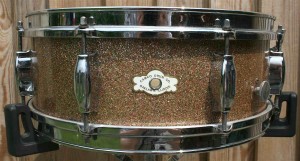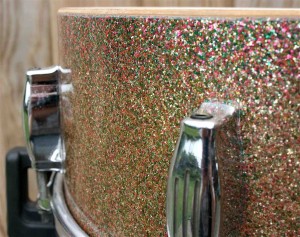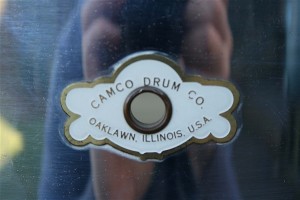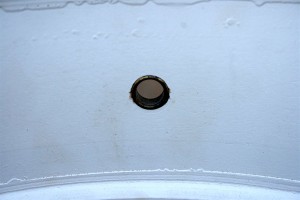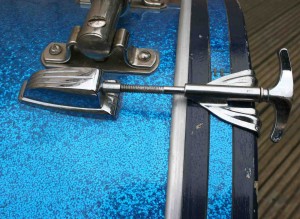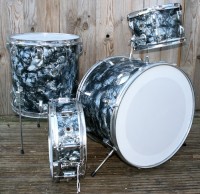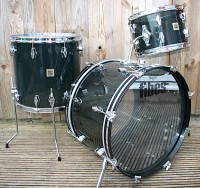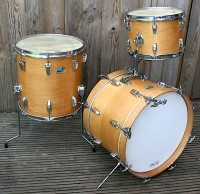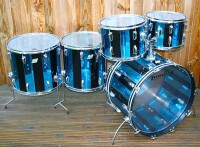From this month onwards we are very pleased to have Mark Jeffs from Rusty Drums (www.rustydrums.co.uk) taking over Vintage View. Statistically, many of you from all around the world will probably be aware of Rusty Drums, if not actually having bought something from them, such is their reach. It is true to say that there are few places on the planet that have the sort of drool-worthy stock that Rusty Drums do.
So welcome to Mark, and lets get on with the Vintage Viewing…
For this, my first article for Mike Dolbear, I thought it would be interesting to look briefly at the documentation and cataloguing of our beloved vintage drums. After all, no everything is as it seems, so it might be good to look at the sort of things that crop up in the vintage world.
Information and knowledge are power, and knowing about the drums you own, play or sell is really important. So many of us that are getting into vintage drums rely on vintage specialist shops, knowledgeable friends or well know forums and websites. Unfortunately though these sources are not always one hundred percent correct and facts can be misquoted.
There’s nothing more exciting than owning a rare snare or set in a seldom seen finish or configuration but how can we be sure it’s original? This is something that’s rather important before handing over large wads of hard earned money.
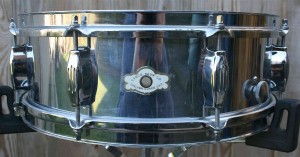 The more drums that we come across, the more we see totally original drums in uncatalogued finishes, custom ordered sizes, or just something that was not listed in the catalogues from the day.
The more drums that we come across, the more we see totally original drums in uncatalogued finishes, custom ordered sizes, or just something that was not listed in the catalogues from the day.
One of the first snares to cause us confusion was a 1962 Camco Tuxedo Orchestral snare. This is easily identified by it’s eight, streamline ‘Tuxedo’ lugs and the Trapezium strainer on the 14×5” wood shell. Everything was catalogue correct… until you look closely at the wrap. It wasn’t champagne sparkle as expected, it was Peacock sparkle. Like champagne, but with subtle red and green flecks to the sparkle. Not something you will find easily on forums or scans of old brochures.
Another Camco snare anomaly surfaced with us – an Oaklawn Badge chrome-over-wood finish. Again, not something that was offered in a catalogue and a wrap option that many believed to be only offered in the later years of Camco when the drums were manufactured in LA.
With both these snares, we were lucky enough to have the provenance of buying from the original owners and hearing how the drums were both special orders, a practice that has happened ever since drum manufacturers introduced fixed ranges and finished of drums. Its not so common now as it was back then, but there are always drummers who want ‘that’ drum in ‘that’ finish and are prepared to pay for it. Its these people who we have to thank for the head scratching.
There are some tell-tale signs if a drum or drum kit have been recovered – non original or incorrect badge grommets are the biggest give away. Often badge grommets are brass (with mainly the exception of Slingerland) and although easy to remove, will damage and distort easily. The heavier hande
d re-wrapper will often damage the inner shell too trying to remove the grommet. Or at least they’ll mark the wood or finish inside the shell.
Fading can also tell you a lot. Most drums that are 30-40 years old have been played, used regularly and of course subjected to substantial amounts of UV (ultra violet light from the sun, which causes fading). A large percentage of these will (once the heads or lugs have been removed) show an unfaded original colour. Thats always a good clue – like a worn accelerator pedal rubber in a car thats ‘only’ done 20k miles.
It happens with kits too.
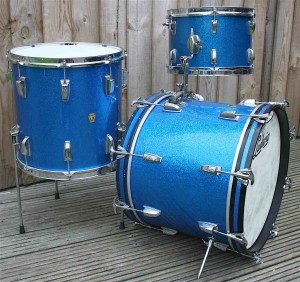 One of our favourites was this 1963 pre serial Badge (1960-1963) Ludwig ‘Jazzette’ Outfit in 18×14, 12×8 and 14×14.
One of our favourites was this 1963 pre serial Badge (1960-1963) Ludwig ‘Jazzette’ Outfit in 18×14, 12×8 and 14×14.
This kit size configuration did not show in any Ludwig catalogues as an option until 1967 (the bass drum was then offered as an 18×12). Was it a cleverly converted floor tom? There were no extra holes, and usually all original and matching parts would normally be enough to tell, but add factory painted blue bass drum hoops with the original inlays still stapled in place and a complete set of (broken) Ludwig logo calf heads on all three drums and your mind is put at rest.
Mark Jeffs

